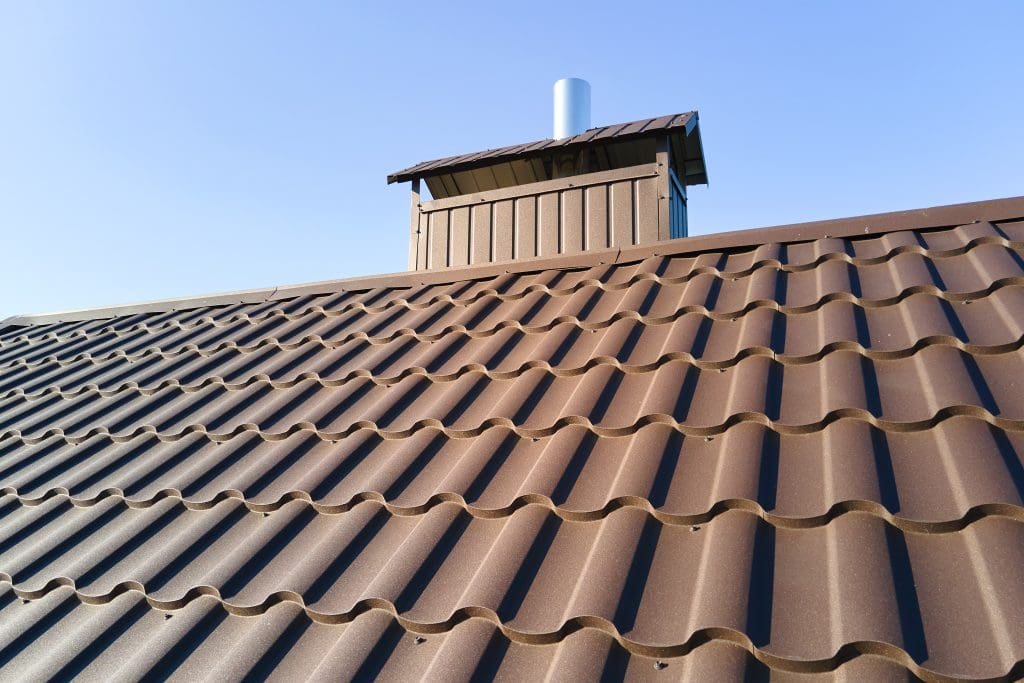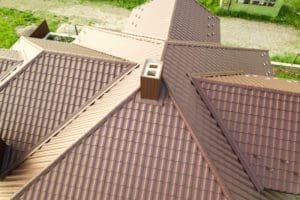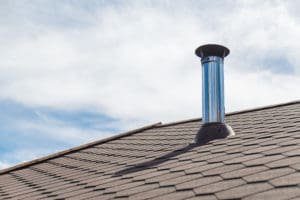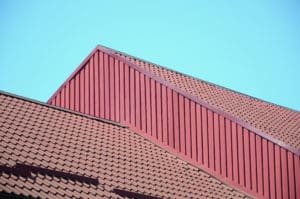Summer storms can be quite damaging to your roof, causing leaks, structural damage, and even complete roof failure. Understanding the impact of these storms and taking proactive measures to protect your roof can help minimize the risks and ensure the longevity of your home. In this article, we will explore some essential tips for protecting your roof from summer storms.
Understanding the Impact of Summer Storms on Your Roof
Summer storms can unleash various elements that pose a threat to your roof. High winds, heavy rainfall, and hail can all cause significant damage if your roof is not adequately prepared. Let’s take a closer look at each of these dangers:
The Dangers of High Winds
High winds are one of the most common causes of roof damage during summer storms. These strong gusts can uplift shingles, tear off roof components, and even uproot trees that may fall onto your roof. Securing loose materials and ensuring proper shingle installation can help mitigate the risk of wind damage.
Additionally, high winds can create negative air pressure above the roof, leading to a phenomenon known as roof uplift. This occurs when the wind flow over the roof creates a suction effect, potentially pulling the roof upward and causing damage to the underlying structure. Properly installed roof sheathing and fasteners can help prevent roof uplift during severe storms.
The Effects of Heavy Rainfall
Heavy rainfall during summer storms can lead to roof leaks and water damage. If your roof has any existing vulnerabilities, such as cracked shingles or missing flashing, the rainwater can easily penetrate and cause significant issues. Regular inspections and timely repairs are crucial for maintaining a watertight roof.
In addition to roof leaks, heavy rainfall can also contribute to the formation of ice dams on the roof edges. Ice dams occur when melting snow refreezes at the eaves, creating a barrier that prevents proper drainage. This backup of water can seep under the shingles, causing water damage to the roof deck and interior of the home. Adequate insulation and ventilation in the attic can help prevent ice dam formation.
The Threat of Hail Damage
Hailstorms are particularly destructive to roofing materials. The impact of hail can create cracks, dents, and fractures on shingles, leading to compromised structural integrity. Certain roofing materials, such as impact-resistant shingles, can provide better protection against hail damage.
It’s important to note that the size and density of hailstones can greatly impact the extent of damage to your roof. Larger hailstones or hailstones with sharp edges are more likely to cause severe harm to your roof’s surface. Regular roof inspections, especially after a hailstorm, can help identify any hail damage early and prevent further issues from arising.
Pre-Storm Roof Inspection and Maintenance

One of the most effective ways to protect your roof from summer storms is through regular inspections and maintenance. By identifying and addressing potential issues early on, you can ensure that your roof is in optimal condition before the storms hit. Here are some key areas to focus on during your inspection:
Importance of Regular Roof Inspections
Scheduling professional roof inspections at least once a year, preferably before the storm season, is crucial. A trained roofing professional can identify any hidden or potential problems and recommend the necessary repairs or maintenance tasks.
Key Areas to Check During Inspection
During a roof inspection, pay close attention to the condition of shingles, flashing, vents, and the overall structure of your roof. Look for signs of leaks, loose or damaged materials, and any areas where water may be pooling.
Essential Roof Maintenance Tasks
In addition to inspections, regular roof maintenance is essential for storm protection. Clearing debris, such as leaves and branches, from gutters and downspouts ensures proper drainage. Trimming nearby trees to minimize the risk of falling branches and removing moss or algae growth on shingles can also help maintain your roof’s integrity.
Furthermore, inspecting the attic space can provide valuable insights into the condition of your roof. Check for any signs of water damage, such as stains or mold growth, which could indicate a leak in the roof. Proper attic ventilation is also crucial for preventing moisture buildup, which can lead to rot and deterioration of the roof structure over time.
Long-Term Roof Protection Strategies
Implementing long-term roof protection strategies can extend the lifespan of your roof and enhance its ability to withstand severe weather conditions. Consider applying a protective roof coating to enhance waterproofing and UV resistance. Investing in high-quality materials during roof repairs or replacements can also contribute to the overall durability and resilience of your roof.
Choosing the Right Roofing Materials for Storm Resistance

The choice of roofing materials plays a significant role in the storm resistance of your roof. Not all materials are created equal when it comes to withstanding the elements. Here are some factors to consider when evaluating different roofing materials:
Evaluating Different Roofing Materials
When selecting roofing materials, consider their durability, resistance to wind and impact, and ability to shed water effectively. Asphalt shingles, metal roofs, and clay or concrete tiles are among the popular choices for storm-prone areas.
Benefits of Impact-Resistant Shingles
Impact-resistant shingles are specially designed to withstand hail and wind-blown debris. These shingles have a reinforced layer that provides additional strength and protection. Investing in impact-resistant shingles can significantly reduce the risk of damage during summer storms.
The Role of Underlayment in Roof Protection
Underlayment is a vital component of the roofing system, providing an extra layer of protection against water infiltration. Synthetic underlayment, such as synthetic felt or rubberized membranes, offers superior resistance to tears and leaks, making it an excellent choice for storm-prone regions.
Another crucial aspect to consider when choosing roofing materials for storm resistance is the roof slope. The slope of your roof can impact how well it sheds water and withstands high winds. Steeper roof slopes are generally more effective at shedding water and reducing the risk of water damage during heavy storms.
In addition to impact-resistant shingles, metal roofs are gaining popularity for their durability and longevity in storm-prone areas. Metal roofs are known for their strength and ability to withstand high winds, making them a reliable choice for homeowners looking to enhance their roof’s storm resistance.
Implementing Additional Protective Measures

While selecting the right materials is crucial, there are additional measures you can take to enhance your roof’s resistance to summer storms. Let’s explore some of these measures:
The Advantage of Roof Sealants
Applying a roof sealant can help reinforce vulnerable areas, such as flashing, chimney joints, and vents. Roof sealants create a watertight seal, minimizing the chances of water infiltration during heavy rainfall.
But what exactly are roof sealants made of? Roof sealants are typically composed of a flexible material, such as silicone or acrylic, that adheres to the surface of your roof. These sealants are designed to withstand extreme weather conditions, including high winds, heavy rain, and intense heat. By creating a protective barrier, roof sealants act as an additional layer of defense against potential leaks and water damage.
When applying a roof sealant, it’s important to clean the surface thoroughly and ensure that it is dry before application. This will help the sealant adhere properly and provide maximum protection. Additionally, regular inspections and reapplication of sealant may be necessary over time to maintain its effectiveness.
Importance of Proper Ventilation and Insulation
Ensuring proper attic ventilation and insulation is vital for maintaining a healthy roof and preventing damage caused by excessive heat and moisture buildup. Adequate airflow can help regulate temperatures and reduce the risk of ice dams during colder months.
But how does ventilation and insulation contribute to the overall health of your roof? Proper ventilation allows air to circulate in your attic, preventing the buildup of heat and moisture. This helps to regulate the temperature in your attic and reduces the risk of condensation, which can lead to mold growth and structural damage.
Insulation, on the other hand, acts as a barrier between your living space and the outside elements. It helps to keep your home cool in the summer and warm in the winter, reducing the strain on your HVAC system and improving energy efficiency.
The Role of Gutters in Protecting Your Roof
Gutters and downspouts play a crucial role in channeling water away from your roof and foundation. Regularly clean and inspect your gutters to prevent clogging and ensure proper water flow. Consider installing gutter guards to minimize maintenance and enhance the overall efficiency of your gutter system.
But how do gutters actually protect your roof? When it rains, gutters collect the water that runs off your roof and direct it away from your home’s foundation. This prevents water from pooling around your foundation, which can lead to structural damage and basement flooding.
Gutter guards, also known as gutter screens or covers, are a valuable addition to your gutter system. These devices help to keep leaves, twigs, and other debris out of your gutters, reducing the risk of clogs and overflow. By minimizing maintenance and ensuring proper water flow, gutter guards enhance the overall efficiency of your gutter system and help protect your roof from water damage.
By understanding the impact of summer storms, conducting regular inspections and maintenance, choosing suitable roofing materials, and implementing additional protective measures, you can significantly reduce the risk of roof damage and ensure your home’s safety during stormy weather. Take the time to evaluate your roof’s current condition and consider consulting with a professional roofing contractor for expert advice and assistance. Stay proactive and protect your roof—it’s your first line of defense against the elements.





